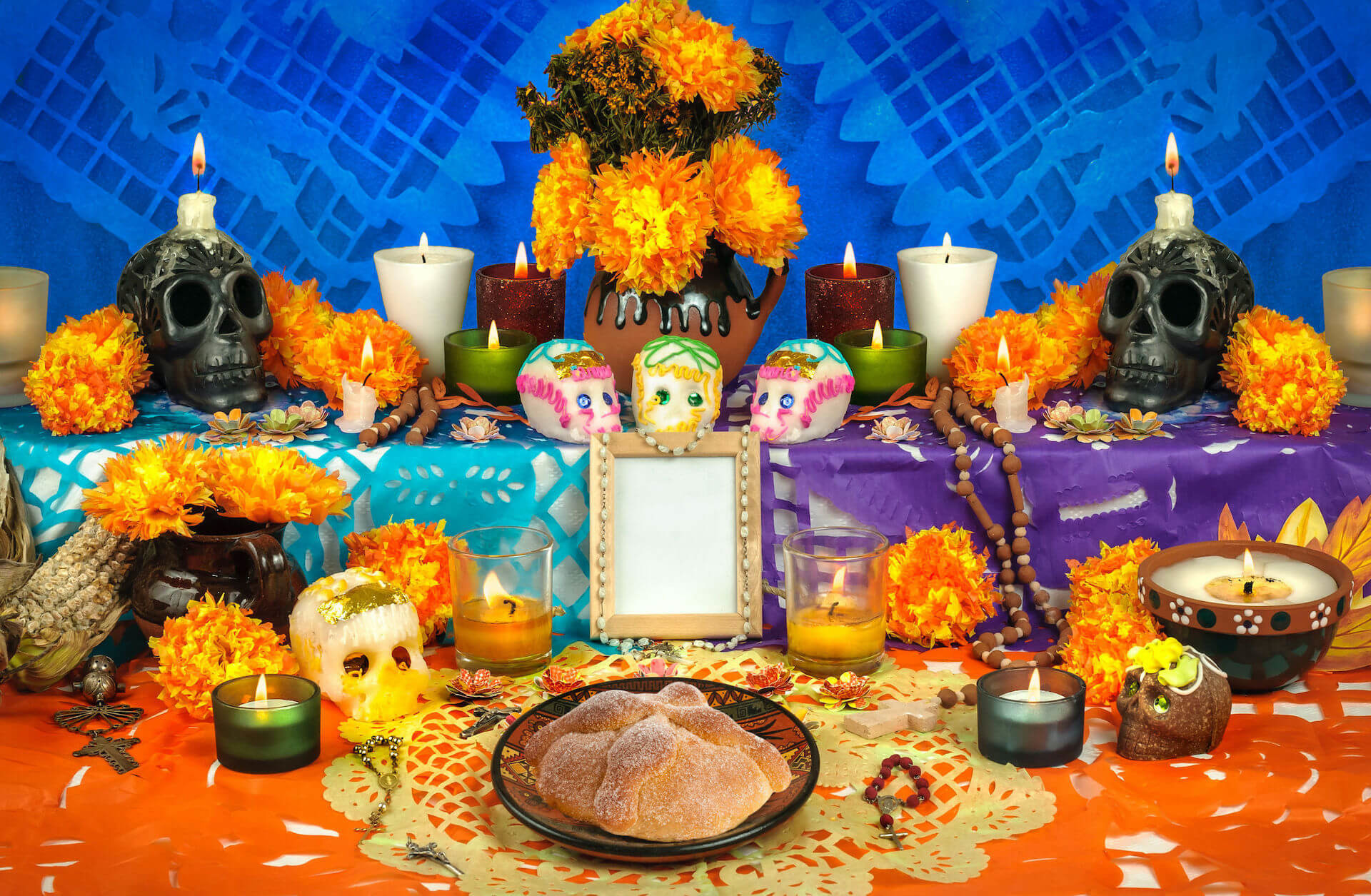
Día De Los Muertos: 10 Curiosities About The Feast Of The Dead In Mexico
If you ever want to capture and feel the soul of Mexico, you must experience a “Day of the dead” celebration. Once you have lived it, you will probably understand why humor always arises to save Mexicans from their tragedies and why they tend to live the present, knowing always that life is short.
These festivities take place on the 1st and 2nd of November in every corner of Mexico, although one of the most emblematic towns where you can enjoy this national holiday is Pátzcuaro, in the state of Michoacán.
Here are 10 curiosities about the feast of the dead in Mexico:
- ”Día de los Muertos” is a celebration of life and death. It is a national feast that goes back thousands of years where the pre-Hispanic cultures of Mexico commemorated and remembered those who passed to eternal life. It is a beautiful, bright, colorful and full of life “day of the dead”, where the deceased temporarily return to earth to visit their families for a day.
- In 2008, UNESCO recognized the great importance of “Día de los Muertos” and added it to its list of Intangible Cultural Heritage of Humanity.
- In Mexico, each family builds their own personal altar where they place pictures of their deceased, a cross, candles, salt, sugar “calaveritas” and a bright yellow marigolds called “Cempazúchil” while copal incense is lit to purify the scene.
The altars are built in 3 levels representing the underworld, life, and life after death.
- If the deceased were buried, their relatives will also decorate their graves and celebrate life, among the dead. They bring their favorite food and drinks, play their favorite music and welcome the souls that have come to visit.
- The deceased’s favorite food and drinks are prepared so they can sustain the long journey to earth and back.
Relatives even place the cigarette brand their loved one smoked, tequila, pulque, mezcal, beer or whatever they liked to drink, and if it was a child that died, they place their favorite meal or toy at the altar.
Candles are lit and marigold petals are laid on the ground, in order to help their deceased relatives find their way home.
- On November 1st, they celebrate the death of the little ones, the babies and children that left as angels. On November 2nd the adults are remembered and felt.
- All schools in Mexico, from kindergarten onwards, have their own altars. Students actively participate in creating and decorating.
- Pan de muerto: (bread of the dead), is a typical sweet and fluffly bread decorated with bones and skulls made from dough and sprinkled with sugar. October and November are the only months of the year where you can enjoy this delicacy.
- Some families place frames with no pictures on them on their altars and prepare extra food and drinks, for those who died and have nobody left on earth to visit.
- If you are in Mexico during these dates, make sure you watch one of the many parades held in towns, Mexico City’s on being the most colorful and spectacular to witness. If you are visiting the Riviera Maya, don’t miss the festival of life and death traditions in Xcaret: not only is there a wide variety of events taking place, you can also taste this festivity’s typical food and visit the park’s graveyard, el pantheon, and understand Mexico’s take on death.
